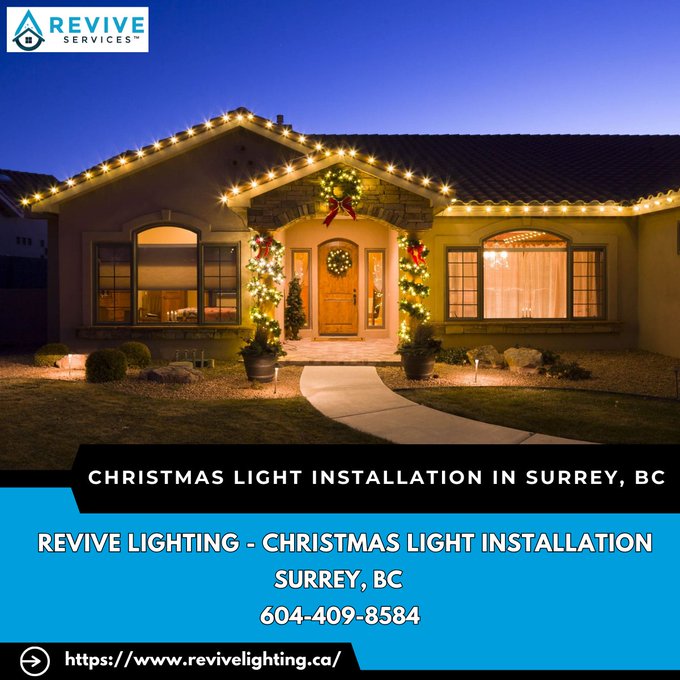Introduction
As the holiday season approaches, homes across the globe transform into colorful displays of twinkling lights and festive cheer. One of the most delightful traditions is decorating with Christmas lights, which can turn any house into a winter wonderland. However, while it’s easy to get carried away with decorations, it's crucial to remember that safety should always come first. In this article, we will dive deep into "Electrical Codes for Christmas Lights: Safety First!" and explore essential guidelines, costs associated with decorations, and tips on ensuring your holiday lighting is both beautiful and safe.
Understanding Electrical Codes for Christmas Lights: Safety First!
When it comes to electrical installations, there are specific codes designed to promote safety. The National Electrical Code (NEC) in the United States provides regulations that govern how electrical systems should be installed and maintained. Understanding these codes can prevent accidents and ensure that your holiday lighting remains a source of joy rather than a cause for concern.
Why Do We Need Electrical Codes?
Electrical codes exist to protect lives and property from fire hazards and electrical shocks. These codes are updated regularly; therefore, staying informed about them is critical for anyone planning to install Christmas lights.
- Fire Hazards: Poorly installed or damaged lights can easily cause fires. Electrical Shock: Faulty wiring may lead to dangerous electrical shocks. Insurance Compliance: Many insurance policies require compliance with local electrical codes.
What Are Common Electrical Codes Relevant to Christmas Lights?
While electrical codes can vary by location, some common considerations include:
Use of Approved Equipment: Only use lights that have been tested by recognized testing laboratories like UL (Underwriters Laboratories). Grounding Requirements: Outdoor lights must be grounded properly to prevent shock. Circuit Load Limitations: Do not exceed the recommended number of light strands on a single circuit. Weatherproofing: Use only weatherproof connectors for outdoor installations. GFCI Outlets: Ground Fault Circuit Interrupter (GFCI) outlets are required for outdoor usage.
How Much Does It Cost to Light a House for Christmas?
Decorating your home with Christmas lights can become an expensive endeavor if you're not careful. Costs vary significantly depending on several factors including:
- Size of Your Home: The larger your house, the more lights you'll need. Type of Lights Used: LED lights tend to cost more upfront but save money in electricity over time. Installation Services: Hiring professionals will add labor costs.
On average, homeowners may spend anywhere from $150 to $1,200 or more during the holidays on lighting alone!
The Price Breakdown
| Type of Expense | Estimated Cost | |-------------------------------|-------------------| | DIY Lights | $50 - $300 | | Professional Installation | $200 - $1,500 | | Electricity Costs | Varies (depends on usage) | | Maintenance & Replacement | $20 - $100 |
How Much Do People Charge to Take Down Christmas Lights?
After the holidays end, taking down those beautiful decorations is another task altogether! Professional services usually charge between $100 and $300, depending on how elaborate your setup was.
Why Hire Professionals?
While it's tempting to do it yourself, hiring professionals offers several benefits:
- They know how to safely handle potentially hazardous situations. They often provide storage services for your lights until next year.
What Lights Do Professional Christmas Light Installers Use?
Professional installers often utilize high-quality commercial-grade lights designed specifically for Holiday Light Installation long-term use outdoors. These typically include:
- LED Light Strings: More efficient and longer-lasting than traditional bulbs. C9 Bulbs: Larger bulbs that create a vibrant look without sacrificing energy efficiency.
These choices ensure safety while providing stunning results!
Why Is Christmas Light Installation So Expensive?
Several factors contribute to the cost of professional installation:
Labor Costs: Experienced technicians charge accordingly based on their expertise. Quality Materials: Professionals use high-quality materials which can drive up prices. Equipment Needs: Specialized tools may be required for safe installation at heights.Do You Tip People Who Put Up Christmas Lights?
Tipping is generally appreciated in service industries but isn't mandatory when hiring professional installers. It's always nice to acknowledge good service—consider tipping 10%–15% if you're satisfied!
FAQs
1. Can you make money installing Christmas lights?
Absolutely! Many people turn this seasonal job into a lucrative side business.
" width="560" height="315" frameborder="0" allowfullscreen>
2. Where can I dispose of Christmas lights near me?
Check local recycling centers or community programs offering holiday light recycling initiatives.
" width="560" height="315" frameborder="0" allowfullscreen>
3. Should you take down Christmas lights?
Yes! It’s advisable to take them down after the New Year as prolonged exposure can damage the materials.
4. How much electricity is wasted on Christmas lights?
It largely depends on usage; however, LED lights consume significantly less energy compared to traditional incandescent bulbs.
5. Are professional Christmas lights worth it?
If you want high-quality installation https://anotepad.com/notes/c6357r2t without hassle or risk, they are worth considering!
6. What is the standard length of Christmas lights?
Most strands come in lengths ranging from 25 feet up to 100 feet but check product details before purchasing.
Conclusion
As you deck out your home this holiday season with dazzling displays of light, remember that safety should always come first! By understanding electrical codes related to using Christmas lights and considering various factors like costs and professional help, you set yourself up for a joyful experience rather than a hazardous one.
Ultimately, whether you decide to hang them yourself or hire professionals—always prioritize adherence to safety standards outlined in "Electrical Codes for Christmas Lights: Safety First!" This way, you’ll enjoy a sparkling holiday season filled with joy without compromising safety!

